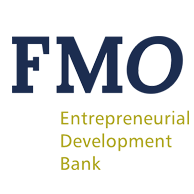


In the meeting rooms of multilateral conferences such as the Biodiversity CoP16 in Colombia and CoP29 in Azerbaijan, governments, NGOs, and investors of all kinds echoed calls for increasing investment in nature.
The forests and sustainable land use (FSLU) sector is key pathway for meeting climate and biodiversity targets, and delivering on sustainable development goals. Solutions such as reducing deforestation, afforestation, reforestation and improved agricultural practices, provide some of the greatest climate mitigation potential this decade.
Yet despite increasingly attractive investment and impact cases, the FSLU sector still struggles to attract finance at the scale needed. The relative nascency of the sector, as well as long project timelines, complex regulatory environments, an immature pipeline, and the need for specialist technical expertise to understand the various metrics and unique risks of the sector, are often barriers which conventional commercial investors may struggle to overcome.
Development Finance Institutions (DFIs) are often held up as potential trailblazers to catalyze investment in FSLU and other nature-positive sectors in developing markets; many of the statements coming out of Cali and Baku this year will point to DFIs to lead the way in accelerating finance for nature. And it is true that DFIs, with their mandates to close the financing gap in emerging markets and nascent sectors, and their market-leading technical expertise of investing in challenging or immature contexts, have a critical role to play in driving the growth of nature-positive markets.
However, the unique role and characteristics of DFIs are not always fully understood by the market. This can create barriers to effective alignment along the investment spectrum to accelerate or catalyze the development of emerging, impactful sectors at the pace and scale needed to deliver on sustainable development goals.
DFIs are specialized finance institutions that lend and invest in the private sector in developing countries, with a specific mandate to drive economic growth, create jobs, tackle climate change, and address other development challenges..
But DFIs are not a homogenous group: although they share specialized characteristics and impact-driven mandates, different DFIs have different structures, funding sources and investment strategies. A critical distinction among DFIs is whether they are able to offer concessional finance. This determines the terms of the financial products that DFIs can offer, their ability to take on higher-risk projects or to provide different degrees of de-risking capital.
Understanding the unique identities, strengths and constraints of individual DFIs is crucial for unlocking their full potential in scaling a high-impact FSLU sector and driving the green transition.
A new paper from the Mobilising Finance for Forests’ Learning, Convening & Influencing platform sheds light on DFIs’ strengths, limitations and the financial tools they can use to catalyze commercial investment. This paper seeks to enhance the understanding of how DFIs catalyze commercial investment in nature-positive projects, while also explaining the financial tools and mechanisms they use to bridge funding gaps in high-risk sectors. By aligning the sector around shared definitions of the roles and capabilities of DFIs as leading impact-focused investors, this paper will support DFIs and other investors to map out more effective partnerships for investing in the FSLU sector.
Mobilising Finance for Forests (MFF) is a UK Government-funded blended finance investment program which aims to combat deforestation and other environmentally unsustainable land use practices that contribute to global climate change. With an initial €178 million (£150 million) commitment from the UK Government, MFF aims to catalyze €1 billion of private sector investment into forestry and sustainable land use projects.